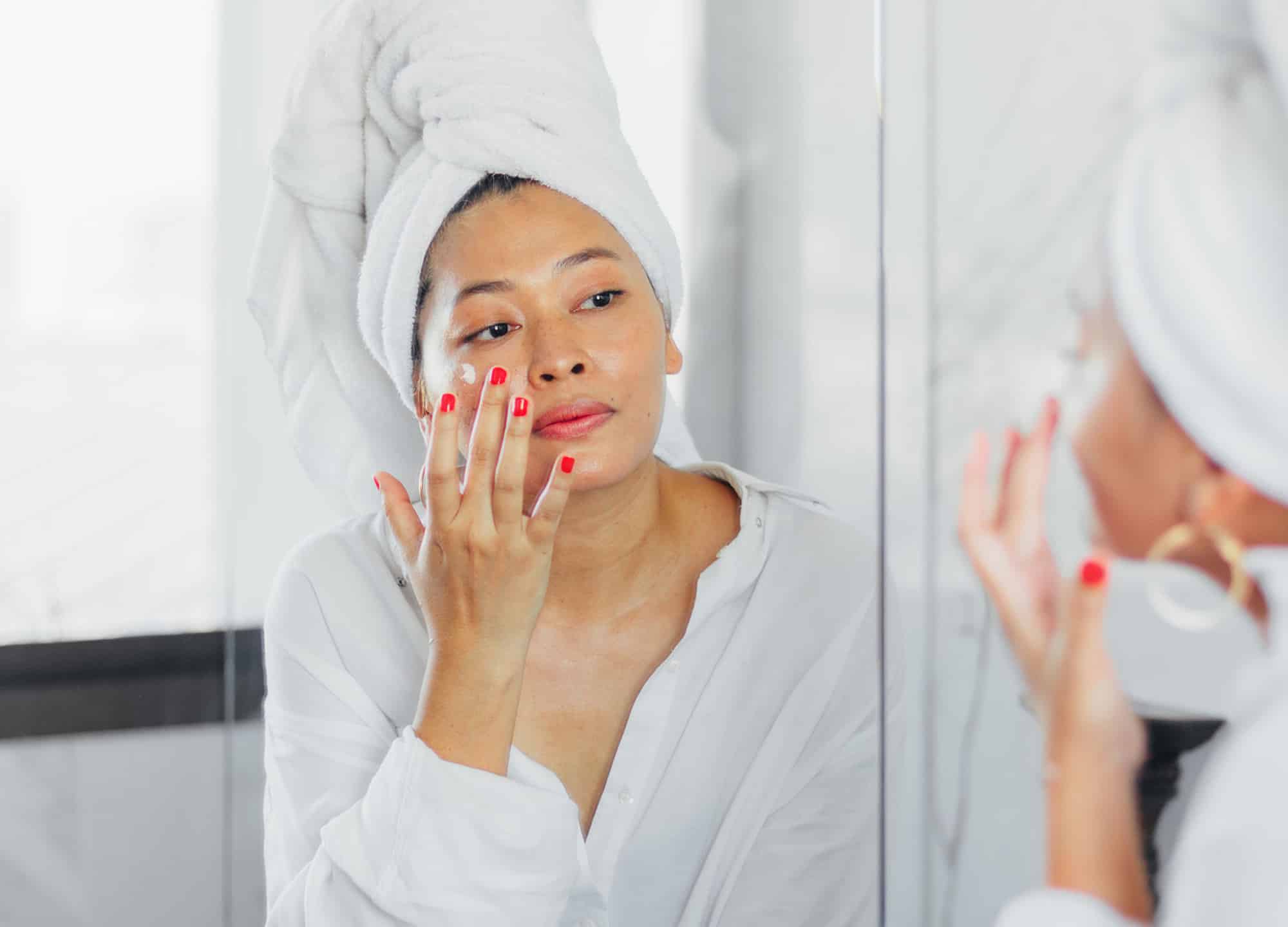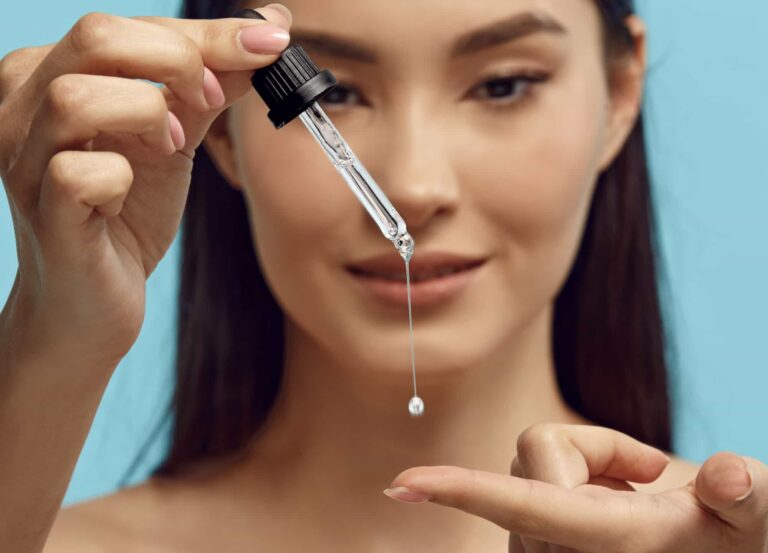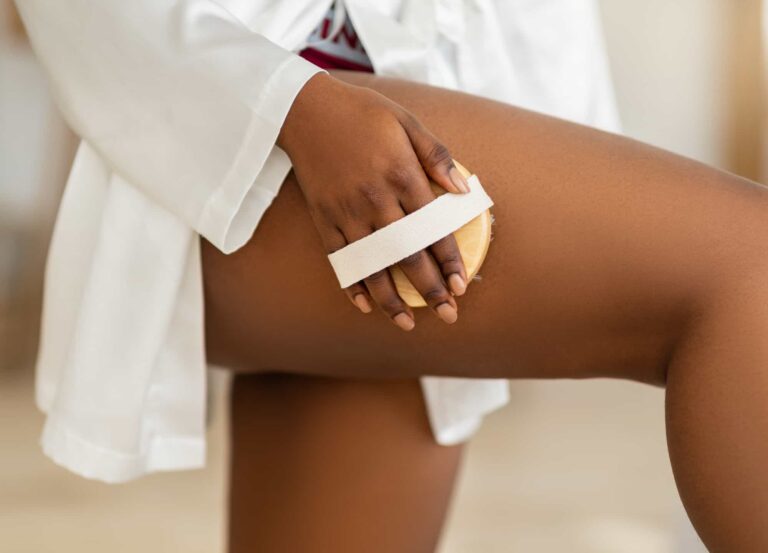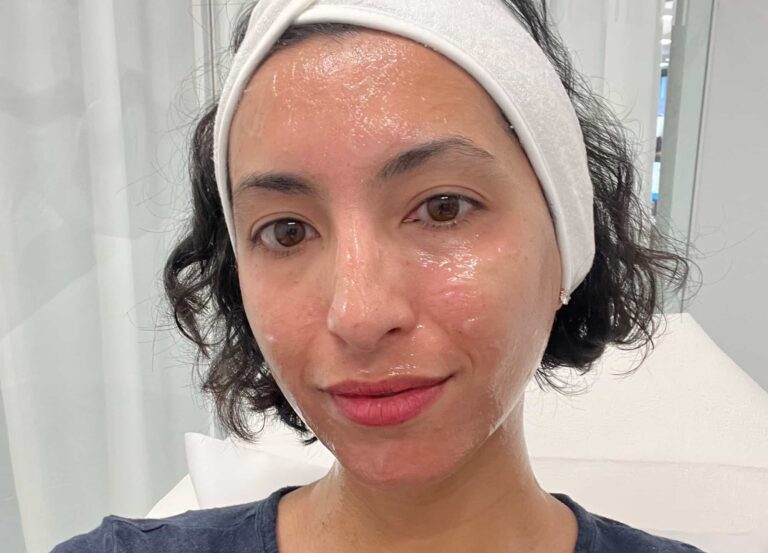Hydroquinone’s reputation precedes it. First discovered as a powerful photographic developing agent in 1880 by Sir William de Wiveleslie Abney, hydroquinone eventually made its foray into skincare, gaining popularity as a skin-lightening ingredient in such regions as Africa and Asia. But its possible side effects—burning, redness, permanent discoloration—and the conversation surrounding the societal pressure on women to bleach their skin have made the ingredient a controversial additive to beauty products. Despite that, many dermatologists consider it the gold standard of lightening solutions—so long as it’s used responsibly.
What is hydroquinone, and what does it do?
Today, you can find hydroquinone available in up to 2% concentration over the counter (often as an ingredient in skincare products, like serums) or above 2% strength by prescription. “Hydroquinone is often used in skin conditions that cause melanin hyperpigmentation, such as traumatic scars, acne scars, age spots, freckles, melasma and lentigines,” says Dr. Sheg Aranmolate, a Nashville physician and the founder of Leovard Skincare.
Hydroquinone lightens the complexion by reducing the number of melanocytes (cells that incite melanin production and are responsible for pigmentation) in the skin. “The ingredient acts by suppressing an important enzymatic reaction in the melanocytes that prevents the conversion of tyrosine to dihydroxyphenylalanine, and this ultimately leads to a reduction in the amount of melanin in the skin,” says Dr. Aranmolate. “This process is reversible, and exposure to sunlight or ultraviolet light will cause rebound hyperpigmentation and darkening of bleached areas.”
The reason hydroquinone is still considered the holy grail of skin-lightening options on the market lies in its strength. “While there are many other ingredients that are available for [skin lightening], none works nearly as well as hydroquinone because many of the others are cosmetic active ingredients, while hydroquinone is a drug active ingredient,” says Dr. Marguerite Germain, a dermatologist in Charleston, South Carolina. Drug active ingredients, like hydroquinone, are those that have been listed by the government as approved skin-lightening medications and have undergone extensive safety and efficacy testing in order to be approved by the U.S. Food & Drug Administration (FDA) as pharmaceutical active ingredients (drugs). According to the FDA, a drug’s intended use is “to treat or prevent disease or otherwise affect the structure or functions of the human body.”
Cosmetic active ingredients, on the other hand, are defined by their intended use: “articles intended to be rubbed, poured, sprinkled, or sprayed on, introduced into, or otherwise applied to the human body…for cleansing, beautifying, promoting attractiveness, or altering the appearance,” according to the Federal Food, Drug, and Cosmetic Act. Essentially, cosmetic active ingredients can’t claim to alter the structure of the skin, like drug active ingredients can.
Other popular, non-hydroquinone lighteners (which are considered cosmetic active ingredients) include kojic acid, arbutin, bearberry, hexylresorcinol, phenylethyl resorcinol, tranexamic acid and azelaic acid, but Dr. Germain cautions against their skin-lightening claims. “Some cosmetics marketers who are not licensed to sell drug products will overstate the potential side effects of hydroquinone, since they can’t sell it—[but] the alternatives don’t perform as well.”
Related: Post-Summer Skin Rehab: 6 Doctor-Approved Treatments to Reverse Sun Damage
The potential side effects of hydroquinone
Classified as a skin allergen and potentially dangerous, hydroquinone has been banned in the European Union, Japan and Australia. “We’ve found that maybe 16–17% of patients have sensitivity to hydroquinone, whether [as] an irritant or an actual true allergy,” explains Dr. Suneel Chilukuri, a dermatologist in Houston. “It’s hard to define, but we know that hydroquinone actually makes your pigmentation worse [if you are allergic to it] because of the inflammatory response that’s there.”
Chronic, long-term use of hydroquinone has also been linked to an increased risk in the development of disorders such as ochronosis. “Ochronosis is a syndrome caused by the accumulation of homogentisic acid [which is associated with the production of brown pigment] in connective tissues,” says Dr. Aranmolate. “This often leads to hyperpigmentation and ‘caviar-like’ lesions on the skin.” According to a study in the Indian Journal of Dermatology, the first reports of ochronosis were found in South Africa, where the skin disorder was described in 28–35% of the black population. Originally, it was thought that ochronosis was being reported exclusively among dark-skinned African individuals, but later reports suggested that fair-skinned people, including Europeans and Hispanics, were suffering from the condition as well. Today, the condition is rarely reported in the U.S., perhaps due to stricter dosage regulation.
Hydroquinone’s association with mercury
In addition to its potential side effects, hydroquinone has come under scrutiny due to reports of products containing the ingredient also being laced with mercury, making them extremely poisonous and even life-threatening. “Mercury is a toxic and cheap ingredient that can lighten the skin while also damaging the kidneys and the nervous system,” says Dr. Michelle Henry, a dermatologist in New York City. The FDA has banned mercury-containing skin bleaches, but they continue to arrive in our market (often from overseas) and have been linked to recent mercury-poisoning cases. Although both hydroquinone and mercury are used as skin-lightening agents, it is mercury that’s been proven to cause harm to the human body when consumed or absorbed in large amounts.
Still, for those living in societies that prize lighter skin tones, the pressure to conform (even at the risk to their health) is high. There are multiple ethnic populations “that really want to lighten their skin, as it’s more of a status symbol to have fair skin,” explains Dr. Chilukuri. “It means that you’re not a worker [under the sun], so there’s a lot of psychology involved in that—the fairer your skin, the more attractive you’re considered in those cultures.”
Related: The Return of the CO2: Why These Next-Level Lasers are a Perfect Procedure for Fall
The bottom line
It’s been confirmed that mercury in high levels is toxic for humans, but the jury is still out as to whether hydroquinone is unsafe. “Laboratory studies on bacteria and animal cells have shown hydroquinone to have some carcinogenic and mutagenic effects, but these effects have yet to have been documented in human studies,” says Dr. Aranmolate. In one study, rats were fed hydroquinone directly over a period of time and suffered no ill effects. In another study, human volunteers ingested up to 500 mg per day for five months, with no negative effects. “Topically, in facial application, less than 200 mg is applied to the skin—and most of that is not absorbed by the skin,” says Dr. Germain. “Two hundred milligrams is 2,500 times less than [what] was ingested in the human safety study.” Scientific testing and the ingredient’s long history of use show hydroquinone to be safe when used as directed or under a doctor’s care. Although some concerned individuals are asking to have hydroquinone reevaluated by the FDA (Dr. Germain says the agency will likely comply soon), so far there are no peer-reviewed credible studies showing hydroquinone to be unsafe in humans.











